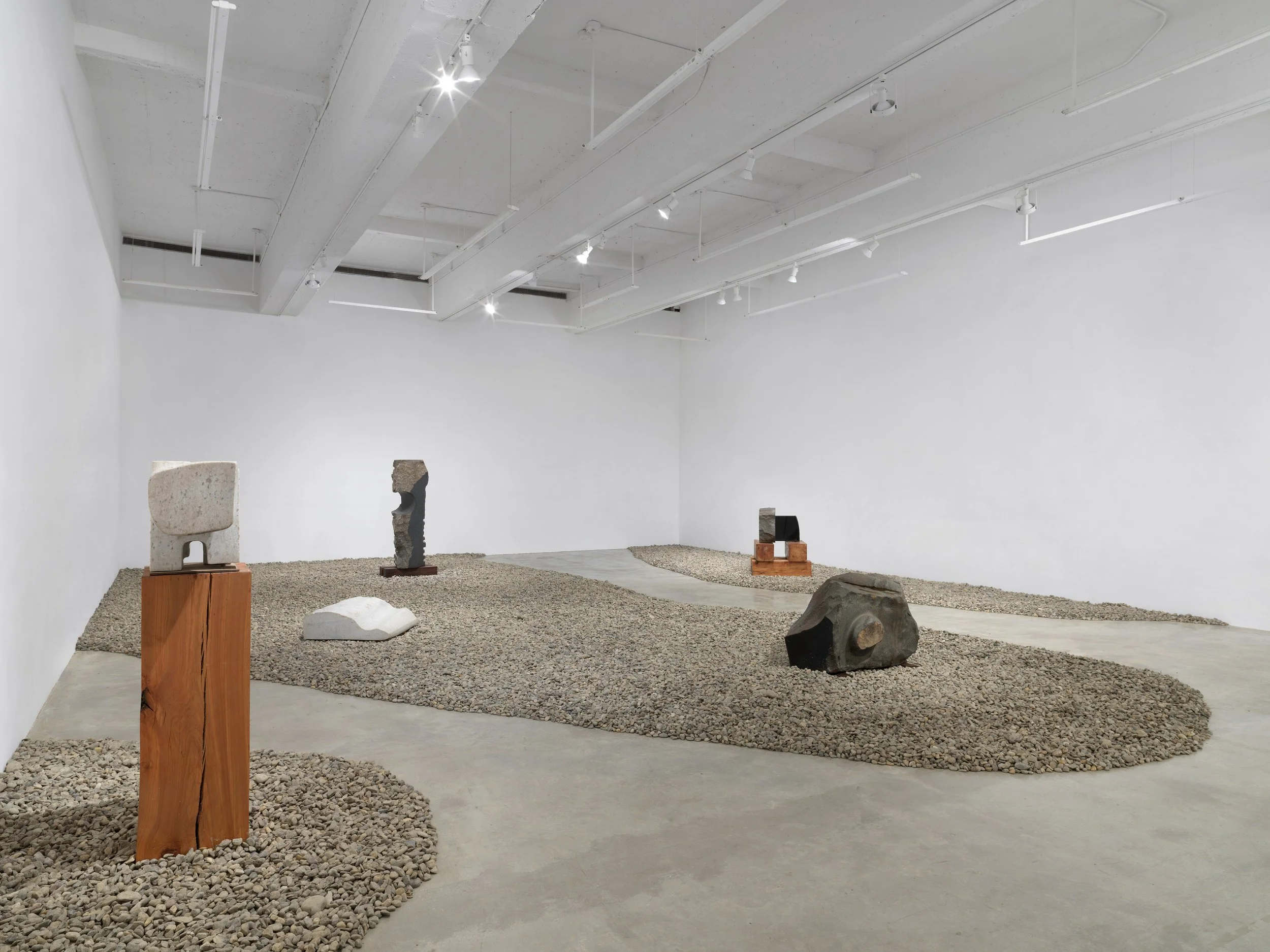Windswept: Minoru Niizuma at Tina Kim Gallery
Minoru Niizuma: Waterfall in Autumn Wind, the exhibition I discuss below, ran from November 10 to December 10, 2022, at Tina Kim Gallery in Chelsea, NYC.
The best art makes the invisible visible, capturing the ephemeral to make it last. Such are the sculptures of Minoru Niizuma, whose granite and marble conjure air where there is stone, movement where there is stillness, and seconds where there are eons.
Niizuma is a master of contrasts––in texture, form, and color––and for the first time in decades, his works, on exhibit at Chelsea’s Tina Kim Gallery until December 10, get their own space, with room to speak. Made of raw materials Niizuma sourced from at least four continents, each work on view showcases a different one of his iconic techniques, from delicate striations in white marble (often in orderly stacks, or concentric squares like in his famous Castle series), to glass-like planes of black granite, to geometric forms composed in perfect harmony. The show’s selections span more than two decades, allowing us to see the sculptor’s style and range over the course of his career.
Via Tina Kim Gallery. Courtesy of the Estate of Minoru Niizuma and Tina Kim Gallery. Photo by Dario Lasagni
There are pieces that magnetize with something akin to irony, like Windy Wind (1969), whose title’s redundancy prefigures its playful style. The four-foot pillar in Portuguese black granite undermines its own vertical gravitas with crisp, almost caricatural wave forms. Windy Wind, like so many Niizumas, generates movement through asymmetries that feel nevertheless balanced, inevitable. Thanks to recent archival work, we now know that these minimalist compositions are more than tributes to form itself, like so much of abstract sculpture from the artist’s contemporaries; with a title like Windy Wind, Niizuma’s granite becomes water so that he might summon, with geometric precision, a forceful gale. And as the exhibition’s name, Waterfall in Autumn Wind, aptly reminds us, this is an artist who should be understood, first and foremost, in relation to his materials: stones, whose heft belies their grace.
Waterfall, the 1975 piece for which the show is named, exemplifies all of it: his reverence for the forces of nature, but also that tongue-in-cheek expressionism that his juxtapositions can produce. Vertical lines, etched as by a finger stroking sand, signal the waterfall––which means that the physics-defying ellipsoid cut from the Vermont white marble must be that autumn wind, once again a powerful shaper of substances, and a hand alongside the artist’s. Perhaps the wind is our unsung mason, whose feats of form elude the eye––over in a millisecond, or requiring a millennium. But not Niizuma’s wind. The sculptor suspends its chaos here, its breath controlled so it may carve itself into view. As a gift to us, the artist has transformed a fleeting moment into an eternity.
via Tina Kim Gallery. Minoru Niizuma, Waterfall in Autumn Wind, 1975.
His early works like these and others in the show seem in perpetual motion; more likely planed smooth and tightly composed, they tell stories: of seas swelling vertical, and waterfalls (or rains, as in Stormy Wind) blown horizontal. Do these tributes exaggerate nature’s power, or simply capture it, in media res, to be properly admired?
Another four-foot-or-so vertical form in the Portuguese black granite, Black Mountain (1986), revisits the dimensions of Windy Wind with a new approach to texture––and a new relationship to the stone. Where earlier works convey cleverness and containment, Black Mountain unleashes something wilder: a kind of dare to feel the pull of its rough face, freshly wrested from the land. Niizuma’s hand has worked the stone, yet he has equally left it to its own rugged and inimitable qualities. Black Mountain’s beauty, then, inheres not only in its buttery curvature and lean, cylindrical grooves, but also in its untidy planes and edges, which signify the artist’s willingness to yield to the grandeur of a mountainside: climbable, yet immovable.
Somehow, these homages to Earth’s geological beauty simultaneously exult and efface the artist’s hand, as though he felt the land itself should get the final word. Indeed, his later works exhibited here suggest that where the young artist sought to tame, the more mature was not afraid to let his materials speak their native tongues. A second Windy Wind, this one dating seventeen years after the first, reveals entirely different properties of the artist’s beloved granite: no longer pure ebony in high polish, the boulder is streaked with yellows, oranges, and browns, its windsweptness now more literal.
Glimpsed in Chelsea this windy autumn, Niizuma’s oeuvre offers us two distinct visions of peace: one, where harmonious forms harness the elements so that we may better know their power; and another, where unvarnished stone recalls a once-unspoiled earth––a piece of which, gazing upon these sculptures, we cannot help but long for.
Works referenced:
Windy Wind (1969)
Waterfall in Autumn Wind (1975)
Windy Wind (1986)
Black Mountain (1986)

